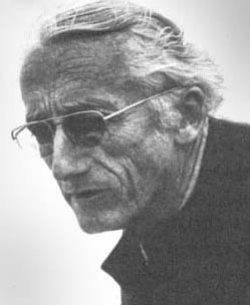Jacques Yves Cousteau

Image courtesy of NASA
- Born
- 11 June 1910
- Died
- 25 May 1997 (age 86)
Jacques Cousteau was a French naval officer, explorer and conservationist, who was famous for his undersea investigations and for developing equipment used in underwater diving, including the Aqualung.
Cousteau was born in 1910 in France. He didn’t do well in school, and so was sent to boarding school in Alsace. He joined a French Naval Academy at Brest, and after graduating, became a gunner with the French Navy’s information service. He took his camera and shot many rolls of film at ports in the Indian and South Pacific Oceans.
In 1933, Cousteau was involved in a major car incident that nearly took his life. He took up swimming in the Mediterranean Sea during his rehabilitation, and was given a pair of swimming goggles by his friend Philippe Tailliez. These goggles allowed him to see the mysteries of the sea.
In 1943, Cousteau and French engineer Emile Gagnan developed the first fully automatic compressed-air Aqualung, which allowed divers to swim freely underwater for extended periods of time.
Cousteau continued to invent many other useful tools for oceanographers; the diving saucer (small submarine for seafloor exploration) and numerous underwater cameras.
During the second world war, Cousteau served as a gunnery officer in France and became a member of the French Resistance against the German occupation. He spied on Italian armed forces and was recognised for his resistance efforts, being awarded several medals, including the Legion of Honor. After the war, Cousteau worked with the French navy to clear mines.
In 1948, Cousteau and Tailliez, along with expert divers and academic scientists undertook an expedition to detect the Roman shipwreck Mahdia in the Mediterranean Sea. This expedition marked the beginning of underwater archaeology.
In 1950, a British minesweeper was converted into the Calypso, an ocean research ship which would carry Cousteau and his colleagues on numerous expeditions all around the world.
In 1953, Cousteau turned his attention to the media, in order to finance his voyages. He published the book The Silent World, which was later developed into an award-winning film. This book was very well respected and was adapted into a documentary film which won the Palme d’Or at the 1956 Cannes international film festival and an Academy Award in 1957.
In 1966, Cousteau released his first ever hour-long television programme ‘The World of Jacques-Yves Cousteau’ on ABC television network. He then continued to produce The Undersea World of Jacques Cousteau, a television series which was produced in 1968 and ran for nine series. He continued to produce television specials with an increased environmental message.
Cousteau wrote several books including The Shark (1970), Dolphins (1975) and Jacques Cousteau: The Ocean World (1985). He founded the Cousteau Society in 1973 to raise awareness of the ecosystems of the underwater world. This organisation quickly grew and had 300,000 members worldwide. He also founded numerous marketing, manufacturing, engineering and research organisations which became the Cousteau Group in 1973.



